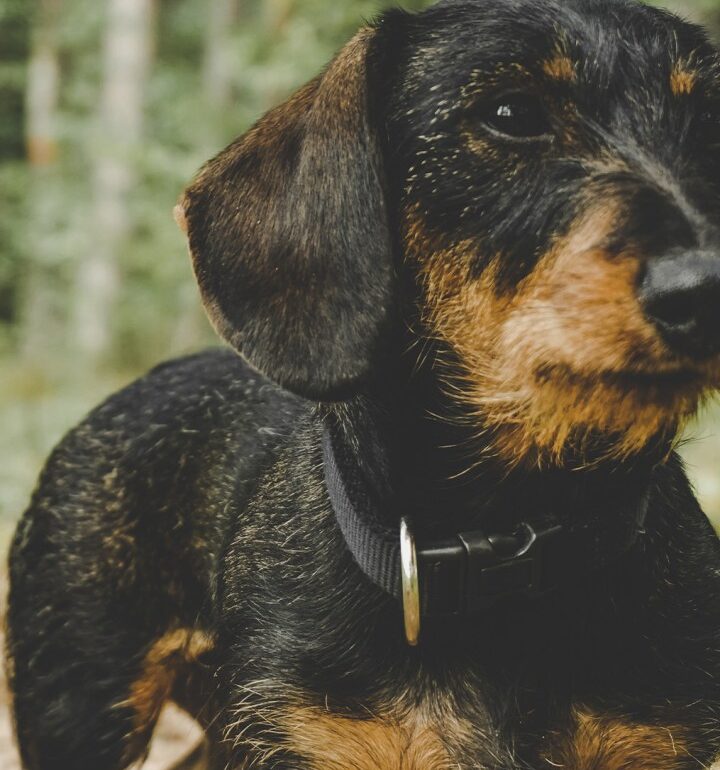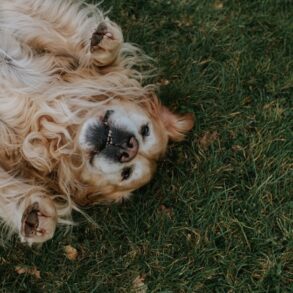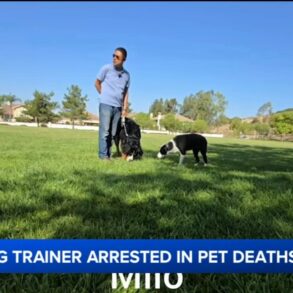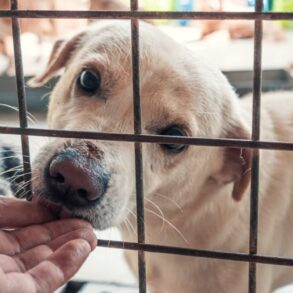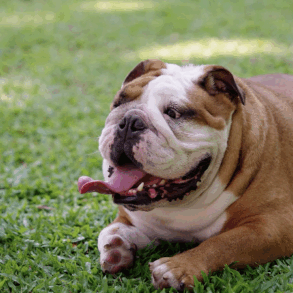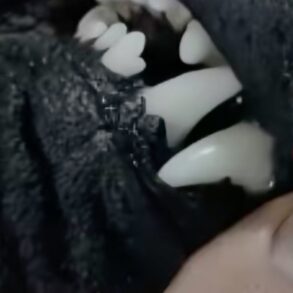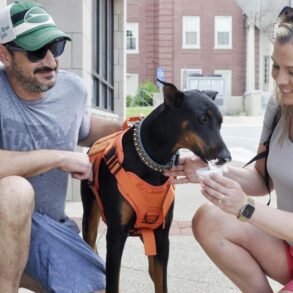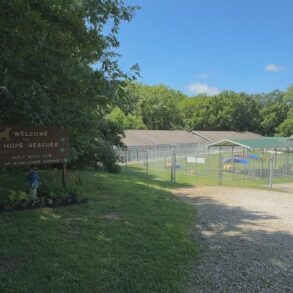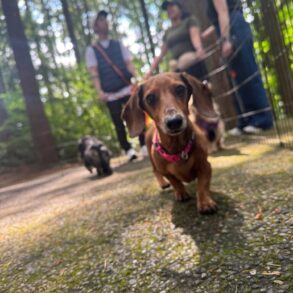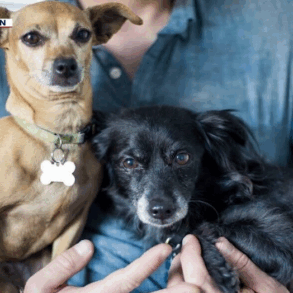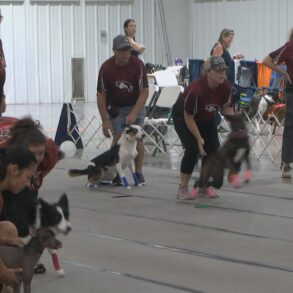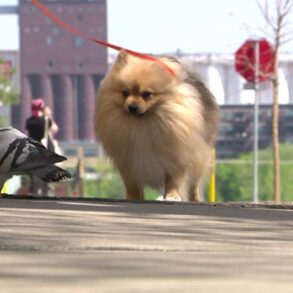Wait, why is there an American dog on the list?
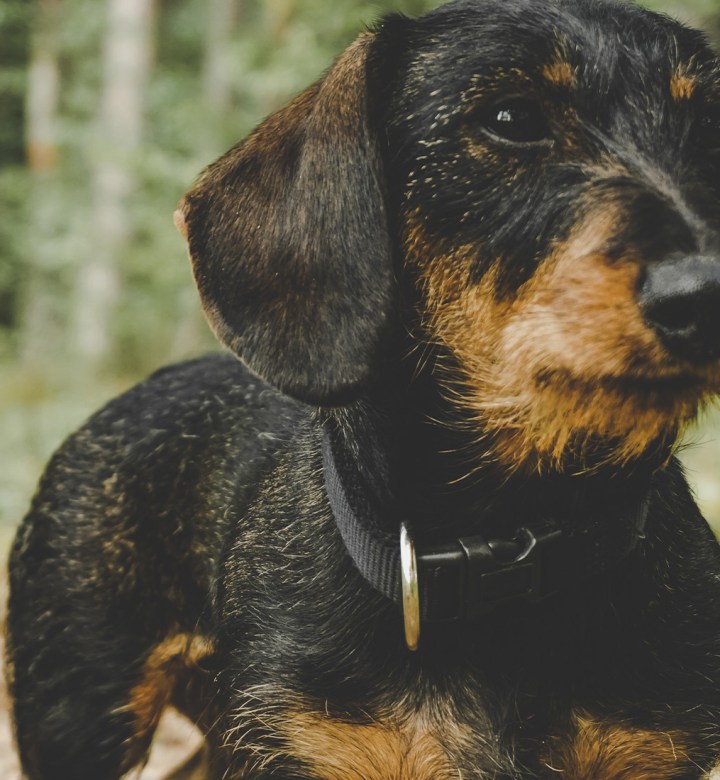
Maximilian Sarnow/Getty Images
Would you believe us if we told you German dog breeds have a lot in common with Chinese dog breeds? Obviously, they’re all canines. Beyond that, Germany and China have bragging rights as home to some of the oldest sites containing evidence of domesticated wolves. They also span the gamut in terms of size, shape and coat type. However, unlike Chinese dog breeds who were primarily bred as workers and have more independent personalities, German dog breeds are overwhelmingly affectionate and active! Many are smart canines who were bred to fetch, retrieve and hunt. Anyone who wants a reliable, sweet companion should definitely consider a German dog breed first.
German Dog Breeds
- Affenpinscher
- Biewer Terrier
- Boxer
- Dachshund
- Doberman Pinscher
- German Longhaired Pointer
- German Pinscher
- German Shepherd
- German Shorthaired Pointer
- German Spaniel (Deutscher Wachtelhund)
- German Spitz
- German Wirehaired Pointer
- Great Dane
- Hanoverian Scenthound
- Hovawart
- Kromfohrländer
- Leonberger
- Löwchen
- Pomeranian
- Poodle
- Pudelpointer
- Rottweiler
- Schnauzer
- Weimaraner
- American Eskimo Dog
History of Dogs in Germany
In March of 2021, Science Alert reported on cave findings in Germany that could be the earliest evidence of domesticated wolves (future dogs) yet. The cave, called Gnirshöhle, is in southwest Germany in the Hegau Jura region near Switzerland. This area is known for its incredibly old (like 17,000 years ago old) fossils and artifacts. These new bones are so significant because they’re older than many previously discovered specimens and they have more genetic variety—meaning this could be the place and time where modern-day wolves, foxes and domesticated dogs really began to take shape.
Modern Dog Culture in Germany
Germans seriously love their dogs—no joke. According to The German Times, “Dogs are more than pets; they are the source of meaning and identity.” As of 2023, there were 10.6 million pet dogs in Germany.
Emma Hurt at NPR reported on the differences between owning a dog in Germany and owning one in the U.S. Aside from a dog tax (roughly $140 per year), it is illegal to keep your dog in a crate in Germany for an extended period of time—or chained up at all. Another law proposed in 2020 requires every pet dog to be let out for exercise twice per day for a total of at least one hour. Hurt says there is even a German state that administers a test to potential dog parents before allowing them to adopt a puppy!
Perhaps regulations are more intense in Deutschland because pet dogs are allowed in tons of public areas (think: public transit, restaurants, hotels). Dogs must be well-behaved and trained rigorously to avoid nasty confrontations or issues. If your dog isn’t well-trained, Hurt at NPR says you should get ready to be called out and asked to leave. Unfortunately, at this time, Germany’s customs page says Pit Bulls, Staffordshire Bull Terriers, American Staffordshire Terriers and Bull Terriers are not allowed entry into Germany as they are considered fighting dogs. Even Rottweilers, a German breed, are considered unpredictable Kampfhunds (attack dogs) in several states and are denied entry.
While most of the dogs on our list were bred initially as skilled hunters, many have turned into loving family pets who know how to learn and obey commands.
26 of the Best German Dog Breeds

Getty Images
1. Affenpinscher
- Height: 9-12 inches
- Weight: 7-10 pounds
- Personality: Goofy, Proud
- Activity Level: Moderate
- Shedding Factor: Hypoallergenic
- Life Expectancy: 12 to 15 years
- Trainability: May be stubborn, bore easily
Originally bred in the 1600s to chase and kill rats, Affenpinschers have become delightful and goofy companion dogs. They’ve definitely retained their bold, brave hunting instincts and may try to play with the big dogs (which could result in their feelings being hurt). Sensitive and smart, the Affenpinscher Club of America says they adapt and travel well.

LukasLt/Getty Images
2. Bavarian Mountain Scent Hound
- Height: 17-21 inches
- Weight: 37-66 pounds
- Personality: Devoted, reserved
- Activity Level: Moderate to High
- Shedding Factor: Moderate
- Life Expectancy: 12 to 15 years
- Trainability: Intelligent and eager to please, trains well with patience
Talk about a hunter! The Bavarian Mountain Scent Hound has a nose so strong it can smell the difference between prey that is bleeding and prey that is not, according to the American Kennel Club. The Bavarian Mountain Scent Hound Club in Germany says these unique dogs were bred because hunting techniques in the late 1800s changed and hunters in the mountains needed more nimble canines. Given their history and intelligence, it’s wise to provide them with ample outdoor time and mental stimulation.

Vincent Scherer/Getty Images
3. Biewer Terrier
- Height: 7-11 inches
- Weight: 4-8 pounds
- Personality: Smart, Loving
- Activity Level: Moderate
- Shedding Factor: Low
- Life Expectancy: 16 years
- Trainability: Easy to train
Say hello to one of the longest living dog breeds! These cuties can live well into their high teens if given quality care and nutrition. In the mid-1980s, a German couple (the Biewers) who were known for breeding Yorkshire Terriers produced a pup with unique blue, white and gold fur. They named her Schneeflockchen von Friedheck and embarked on the Biewer Terrier breeding journey. These are charming, sweet pups who love to play.

Danny Beattie Photography/Getty Images
4. Boxer
- Height: 21-25 inches
- Weight: 50-80 pounds
- Personality: Active, Playful
- Activity Level: High
- Shedding Factor: Low to Moderate
- Life Expectancy: 10 to 12 years
- Trainability: Trains moderately well, keep things interesting to avoid boredom
Boxers today are descendants of hunting dogs known as Bullenbeissers (picture a big Mastiff) who were popular as far back as the Middle Ages, according to the American Boxer Club. This working breed really came into focus at the first Boxer dog show in 1895 in Munich. Since then, these dogs have become lovable sweethearts who aren’t afraid to show their excitement when they see you. They make great family pets—as long as you train the “down” command early; otherwise they’ll jump on everyone.

COURTNEY CAIN / EYEEM/GETTY IMAGES
5. Dachshund
- Height: 8-9 inches (Standard), 5-6 inches (Miniature)
- Weight: 16-32 pounds (Standard), up to 11 pounds (Miniature)
- Personality: Curious, affectionate
- Activity Level: Moderate
- Shedding Factor: Low
- Life Expectancy: 12 to 16 years
- Trainability: learn quickly, but can be stubborn
Ever wonder why Dachshunds are so long and skinny? They were bred to hunt badgers! Their wiener-dog shape made it easy to wiggle into badger dens, a skill they perfected centuries ago. These affectionate—albeit loud—watch dogs are considered national symbols of Germany and were recently honored with a museum.

RISTOARNAUDOV/GETTY IMAGES
6. Doberman Pinscher
- Height: 24-28 inches
- Weight: 60-100 pounds
- Personality: Intelligent, alert
- Activity Level: High
- Shedding Factor: High
- Life Expectancy: 10 to 12 years
- Trainability: easy to train
The Doberman Pinscher Club of America says these pups first popped up in Germany in the 19th century. The exact lineage that led to the development of the Doberman is murky, but the breed as we know it today is a regal and loyal companion. They are super smart and have served alongside soldiers in war and as service dogs for people with physical and mental disabilities. Despite their short, sleek coats, Doberman Pinschers shed profusely.

Bigandt_Photography/Getty Images
7. German Longhaired Pointer
- Height: 22-28 inches
- Weight: 55-80 pounds
- Personality: Friendly, sweet
- Activity Level: High
- Shedding Factor: Moderate
- Life Expectancy: 12 to 14 years
- Trainability: easy to train
The German Longhaired Pointer Club of America says German art from the Middle Ages depicts these longhaired dogs hunting waterfowl. Not much has changed! Today, German Longhaired Pointers excel at retrieving ducks and geese during hunts and love water. They are calm and focused, but incredibly sweet and great with kiddos. As long as they get enough exercise, they’ll follow you anywhere.

Vieriu Adrian/Getty Images
8. German Pinscher
- Height: 17-20 inches
- Weight: 25-45 pounds
- Personality: Intelligent, playful
- Activity Level: High
- Shedding Factor: Moderate
- Life Expectancy: 12 to 14 years
- Trainability: trains well with routine sessions and firm boundaries
Though German Pinschers didn’t arrive in the U.S. until the 1970s, they were being bred in southern Germany nearly a century before. Fun fact: Schnauzers and Pinschers are almost the exact same dog. The German Pinscher Club of America says a single pinscher breed had been bred with two different coat varieties – wire-haired and smooth-haired. In the early 1900s, breeders decided the wire-haired would become Schnauzers and the smooth-haired would become Pinschers. These pups are affectionate, energetic dogs who are ready to play.

Purple Collar Pet Photography/Getty Images
9. German Shepherd
- Height: 22-26 inches
- Weight: 50-90 pounds
- Personality: Loyal, confident
- Activity Level: High
- Shedding Factor: High
- Life Expectancy: 7 to 10 years
- Trainability: easy to train
The German Shepherd is a striking animal with deep loyalty and high intelligence. Though their history doesn’t extend as far back as say, the Boxer’s, these dogs have earned the title of most popular German breed. The German Shepherd Dog Club of America says these pups first came to America in 1907 and have since served as bomb sniffers, therapy dogs, search-and-rescue dogs and so much more. Their intelligence makes them easy to train, though they can become so focused on tasks that they will be relentless playmates. Early training and socialization ensures their aloofness doesn’t become aggression.

Jo Bradford/Green Island Art Studios/Getty Images
10. German Shorthaired Pointer
- Height: 21-25 inches
- Weight: 45-70 pounds
- Personality: Friendly, active
- Activity Level: High
- Shedding Factor: Moderate
- Life Expectancy: 10 to 12 years
- Trainability: trains well with routine sessions and firm boundaries
OK, think about a German Longhaired Pointer but smaller, with shorter hair. That’s the active and even-tempered German Shorthaired Pointer! Bred over centuries to track birds, the breed finally came to the American Midwest in the 1930s after hunters in Montana and Nebraska caught wind of their talents, according to the German Shorthaired Pointer Club of America. Today, GSPs, as they are called, love to bond with their people and be in on the action. One word of warning: The AKC says these dogs are “extremely challenging from six months to three years.” So while they are smart and eager to please, training could be hard for novice dog owners.

u.s.fotografie/Getty Images
11. German Spaniel (Deutscher Wachtelhund)
- Height: 18-21 inches
- Weight: 40-55 pounds
- Personality: Loving, alert
- Activity Level: High
- Shedding Factor: Moderate
- Life Expectancy: 12 to 14 years
- Trainability: easy to train
These dogs are intriguing. Not only do they go by several aliases (German Spaniel, Deutscher Wachtelhund, German Quail Dog), the AKC says it’s rare to find one in the U.S. or beyond hunting groups in Germany. They are more muscular and smaller than German Longhaired Pointers and have keen noses like Bloodhounds. They’re also more mellow than their fellow hunting dogs and enjoy less strenuous exercise indoors. Don’t keep the Deutscher Wachtelhund inside forever, though! They do love water.

Marius Faust/EyeEm/Getty Images
12. German Spitz
- Height: 12-15 inches
- Weight: 24-26 pounds
- Personality: Lively, adaptable
- Activity Level: Moderate
- Shedding Factor: Moderate
- Life Expectancy: 13 to 15 years
- Trainability: easy to train
These smiling little buggers are incredibly fun-loving dogs but may need a little time to warm up to new people or pets. Unlike so many other breeds on our list, the German Spitz is not a hunter. They are, however, watchdogs and have been since the 1400s. Get ready for your German Spitz to bark at intruders and anything unfamiliar, says The German Spitz Club of America. These pups are close relatives of Keeshonds and Pomeranians, hence their super fluffy coats.

JMichl/Getty Images
13. German Wirehaired Pointer
- Height: 22-26 inches
- Weight: 50-70 pounds
- Personality: Affectionate, outgoing
- Activity Level: High
- Shedding Factor: Low to Moderate
- Life Expectancy: 14 to 16 years
- Trainability: easy to train
The German Wirehaired Pointer’s coat is no accident. The German Wirehaired Pointer Club of America says these dogs were bred specifically to hunt in all types of terrain and weather (fields, mountains, rivers—you name it). Ergo, their coats needed to be a bit more versatile than those of other hunting dogs. Not only are their coats waterproof, but their bangs also keep grass and branches from scratching their eyes! Even non-hunters will love their affectionate nature and up-for-anything attitude.

Jason Childs/Getty Images
14. Great Dane
- Height: 28-32 inches
- Weight: 110-175 pounds
- Personality: Patient, friendly
- Activity Level: Moderate
- Shedding Factor: Low
- Life Expectancy: 7 to 10 years
- Trainability: eager to please, socialization is a must
Perhaps one of the most recognizable breeds of all time is the Great Dane. These gentle giants were initially bred to hunt boars in Germany almost 500 years ago, according to the Great Dane Club of America. Their regal stature and easy-going nature make them excellent family pets today (they’re also terrific watchdogs, so introductions to strangers should happen slowly and early socialization is a must). Be sure to provide optimal care with regular vet visits for your Great Dane to ensure a long life.

NorthStar203/Getty Images
15. Hanoverian Scenthound
- Height: 19-21 inches
- Weight: 80-100 pounds
- Personality: Independent, even-keeled
- Activity Level: Moderate
- Shedding Factor: Moderate
- Life Expectancy: 10 to 14 years
- Trainability: difficult to train
A hunting estate in 17th-century Germany is responsible for the Hanoverian Scenthound we know and love today. The AKC says the Hanover estate wanted a Bloodhound-esque dog who could track wounded prey. Like all energetic hunting dogs on this list, it’s wise to get them outdoors and try agility exercises with them to keep them happy. While not super affectionate or social with their families, these pups love a canine playmate.

DoraZett/Getty Images
16. Hovawart
- Height: 23-28 inches
- Weight: 65-90 pounds
- Personality: Protective, loving
- Activity Level: Moderate
- Shedding Factor: Moderate
- Life Expectancy: 10 to 14 years
- Trainability: may be difficult to train
The Hovawart Club of North America calls these dogs “handsome,” and we can see why! You might mistake a golden-hued Hovawart for a Golden Retriever. The club also warns that a Hovawart’s strong-willed personality may make training tricky, especially for first-time dog owners. These working dogs (whose name in Middle High German literally means “yard watchman”) are incredibly devoted to their people. Their watchdog instincts are strong, so be ready to train them to behave themselves around strangers. Though enormous (they’re related to Leonbergers and German Shepherds), Hovawarts rarely bark and do love to cuddle.

BiancaGrueneberg/Getty Images
17. Kromfohrländer
- Height: 15-18 inches
- Weight: 20-35 pounds
- Personality: Smart, playful
- Activity Level: Moderate to High
- Shedding Factor: Low
- Life Expectancy: 13 to 15 years
- Trainability: easy to train
Though officially developed in Germany in the 1940s and 1950s, U.S. troops serving overseas in World War II were the first to fall in love with the breed, according to the Kromfohrländer Club of America. These dogs were companion animals for many soldiers and are believed to have initially been a mix of many breeds in Europe at the time. Today, these scruffy yet loyal lovebugs want nothing more than to play with their favorite people.

Bigandt_Photography/Getty Images
18. Leonberger
- Height: 25-32 inches
- Weight: 90-170 pounds
- Personality: Intelligent, goofy
- Activity Level: Moderate to High
- Shedding Factor: High
- Life Expectancy: 7 to 10 years
- Trainability: easy to train, early socialization is a must
Now, here is a dog literally built for companionship. In 19th century Leonberg, Germany, politician Heinrich Essig, created a loving, intelligent companion dog by breeding St. Bernards and Newfoundlands. Though they may cost you more than the average breed, these sweet giants are great with kids, patient with new faces and always ready for a long nap. Be prepared for lots of shedding, too.

Nikola Vukicevic / EyeEm/Getty Images
19. Löwchen
- Height: 12-14 inches
- Weight: 15 pounds
- Personality: Social, affectionate
- Activity Level: Moderate
- Shedding Factor: Non-shedding
- Life Expectancy: 13 to 15 years
- Trainability: easy to train
Five centuries ago, if you wanted a lap dog who was obsessed with you and didn’t need much exercise, you’d probably have a Löwchen. These compact creatures pack in a whole lot of dog, and love! Though outgoing within their families, the Lowchen Club of America says they’re known as “little lions” for a reason. Löwchen are brave pups who are used to living among–and being treated like–royalty. Bonus: they’re non-shedding!

PopoudinaSvetlana/Getty Images
20. Pomeranian
- Height: 6-7 inches
- Weight: 3-7 pounds
- Personality: Lively, Adaptable
- Activity Level: Moderate to High
- Shedding Factor: Moderate
- Life Expectancy: 12 to 16 years
- Trainability: may be stubborn
The American Pomeranian Club says these furry pups are the descendants of Icelandic spitz-style dogs. Eventually these dogs ended up in Pomerania along the Baltic Sea. They were then bred to be more compact companions and became favorites of royalty. Today, they are super lively and protective dogs who aren’t afraid to bark at strangers. Poms make great pets for seniors, too. Get ready for lots of cuddles and a pup who will travel with you anywhere.

kiszon pascal/Getty Images
21. Poodle
- Height: 15 inches
- Weight: 40-70 pounds
- Personality: Intelligent, active
- Activity Level: High
- Shedding Factor: Hypoallergenic
- Life Expectancy: 10-18 years
- Trainability: easy to train
Uh oh, did you think poodles were French!? Mais, non! The AKC says they are German and were originally bred as duck hunters (the French call them Caniches, or “duck dogs”). Even their fancy cuts these days originated from a hunting perspective. According to the AKC, hunters didn’t want fluffy Poodle fur tripping them up in the water, but they did want their extremities and torsos insulated from cold weather. These dogs still retain their energetic dispositions; they’re also incredibly friendly, sweet family pets.

RoGa_Pictures/Getty Images
22. Pudelpointer
- Height: 22-26 inches
- Weight: 45-70 pounds
- Personality: Sweet, calm
- Activity Level: Moderate to High
- Shedding Factor: Moderate
- Life Expectancy: 12 to 14 years
- Trainability: easy to train
A cross between a poodle and a Pointer, the Pudelpointer (clever name) is a hearty breed of dog ready to perform a duty without a hitch. The Pudelpointer Club of North America says the breed first came to the U.S. in 1956 and their calm demeanor makes them very adaptable and obedient. While affectionate, they may not make the best of playmates for children.

dageldog/Getty Images
23. Rottweiler
- Height: 22-27 inches
- Weight: 80-135 pounds
- Personality: Confident, loving
- Activity Level: Moderate
- Shedding Factor: Moderate
- Life Expectancy: 9 to 10 years
- Trainability: easy to train, some may be more stubborn
As true watchdogs, Rottweilers will not shy away from a chance to protect their family members. They were bred from Mastiffs hundreds of years ago as herders and guardians. It’s no wonder they retain a cool confidence and sweet loyalty today (the AKC says they can also come off as aloof or be wary of strangers). Because of this protective nature, The American Rottweiler Club recommends training and socializing them early.

Darren Brown/Getty Images
24. Schnauzer (Giant, Standard, Miniature)
- Height: 12-14 inches (miniature), 17-20 inches (standard), 23-28 inches (giant)
- Weight: 11-20 pounds (miniature), 30-50 pounds (standard), 55-95 pounds (giant)
- Personality: friendly, obedient
- Activity Level: moderate
- Shedding Factor: hypoallergenic
- Life Expectancy: 12 to 16 years
- Trainability: intelligent, train well, bore easily
Schnauzers come in three unique sizes—and all are obedient, affectionate and generally good with kids, says the AKC. Their hypoallergenic coats also make them appealing to allergy sufferers. Schnauzers were bred to chase rats out of barns, herd cattle and act as working farm dogs. They make loyal playmates—though you’ll have to keep an eye on their high prey drive. All sizes are smarties who bore easily, so make training entertaining to keep their attention.

Denis Korec / EyeEm/Getty Images
25. Weimaraner
- Height: 23-27 inches
- Weight: 55-90 pounds
- Personality: Friendly, obedient
- Activity Level: High
- Shedding Factor: Moderate
- Life Expectancy: 10 to 13 years
- Trainability: easy to train
A Weimaraner’s sleek, silvery gray coat is the first thing you notice. The second is their extreme friendliness and sociability. The Weimaraner Club of America says they are “people-centric” and love to be around families, kids and other pets! Weimaraners are also incredibly intelligent and obey commands easily. Bred in Germany in the early 1800s to hunt bears and deer, Weimaraners finally arrived in America in the early 20th century. We’re so glad they did.

Sarah Stier/Getty Images
26. American Eskimo Dog
- Height: 9-12 inches (toy), 12-15 inches (miniature), 15-19 inches (standard)
- Weight: 6-10 pounds (toy), 10-20 pounds (miniature), 25-25 pounds (standard)
- Personality: intelligent, social
- Activity Level: high
- Shedding Factor: high
- Life Expectancy: 13-15 years
- Trainability: easy to train
Why is there an American dog breed on this list, you ask? Well, American Eskimo Dogs actually hail from Germany. When German settlers came to the American midwest, they brought their German Spitzes with them. The dogs worked on farms and even performed in vaudeville acts. During World War I, animosity towards all things German spread around the U.S., so these dogs were re-named and bred into the sweet, obedient and social companion pups we know and love today.
Frequently Asked Questions
What is the official dog of Germany?
Since 1876, the Great Dane has been the official national dog of Germany, according to the breed’s American club. The group also notes that today’s Great Danes are much friendlier and make better family pets than the dogs originally bred in Germany. Those ancient pups were used to hunt boars and fight bears. The AKC says these more aggressive traits were bred out of Great Danes over time, as the needs of the people employing them changed.
What is a small fluffy German dog?
If you’re in the market for a small, fluffy German dog, allow us to point you in the direction of Pomeranians, German Spitzes and American Eskimo Dogs. All three are delightful companions who have the fluffiest, floofiest bodies of fur we’ve ever seen. The smallest option would be a Pomeranian, as these dogs max out at about six pounds. Toy Eskies are also teeny things, as are Toy Poodles if you’re dead set on a dog that travels well.
What is a short-haired dog breed in Germany?
Short-haired breeds native to Germany include German Shorthaired Pointers, Weimaraners, Great Danes, German Pinschers, Doberman Pinschers, Boxers, short-haired Dachshunds and Bavarian Mountain Scent Hounds. Keep in mind, short hair doesn’t automatically mean low-shedding. Dobermans in particular shed a ton. So, while grooming may require a quick brushing every week or so, you may spend lots of time vacuuming stray hairs.
What is a German wolf dog?
Wolf dogs are hybrid animals created by breeding dogs with wolves. A German wolf dog isn’t exactly a specific breed, though Czechoslovakian wolf dogs are bred by combining a German Shepherd and a Carpathian wolf, according to the European Wilderness Society. There are also Saarloos Wolfdogs, which are mixes of German Shepherds and Siberian wolves. These hybrids were developed in the early 20th century and are typically more reserved, according to the breed standard. The goal was to create a breed totally devoted to its owner and wary of, or almost indifferent to, strangers. The Algemene Vereniging voor Liefhebbers van Saarlooswolfhonden (AVLS), an organization whose title translates to the General Association for Lovers of Saarloos Wolfdogs, is working hard to establish safe breeding practices for Saarloos Wolfdogs.
This post was originally published on this site be sure to check out more of their content.




